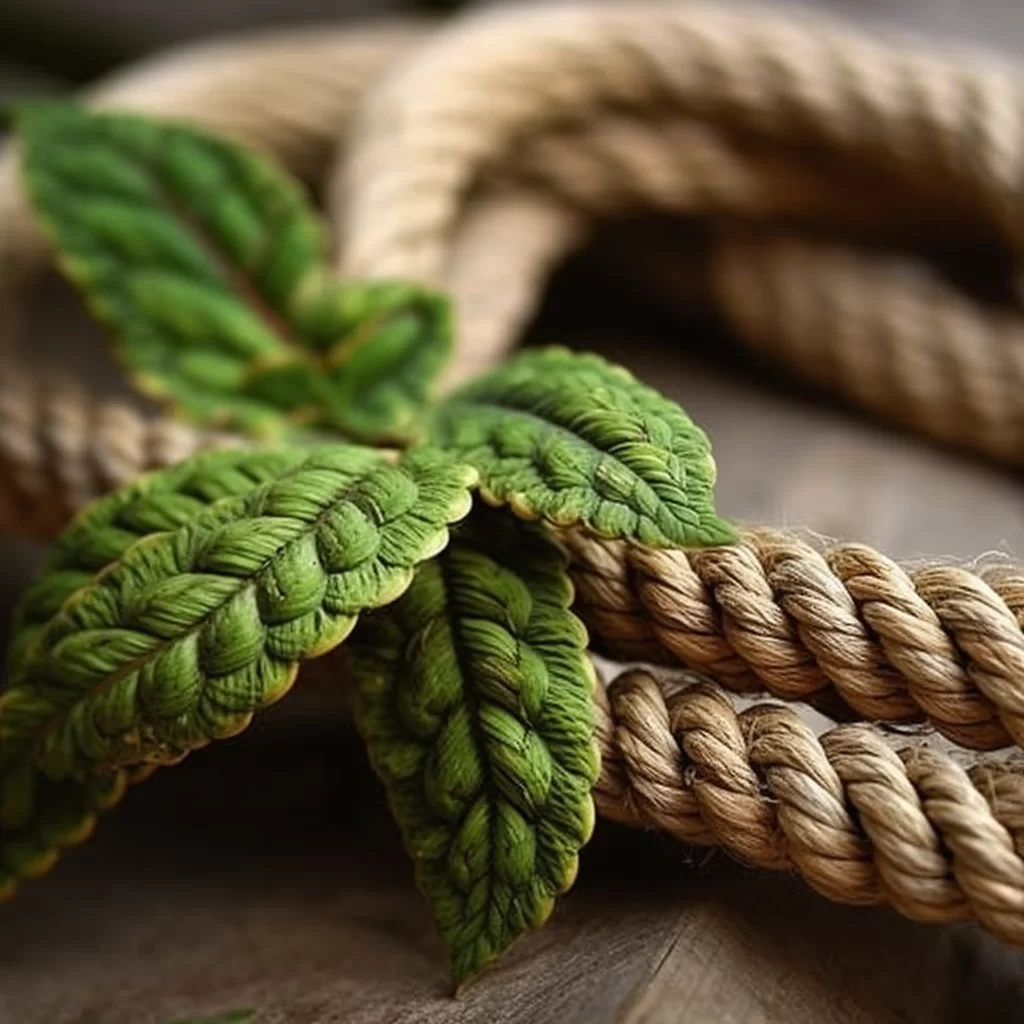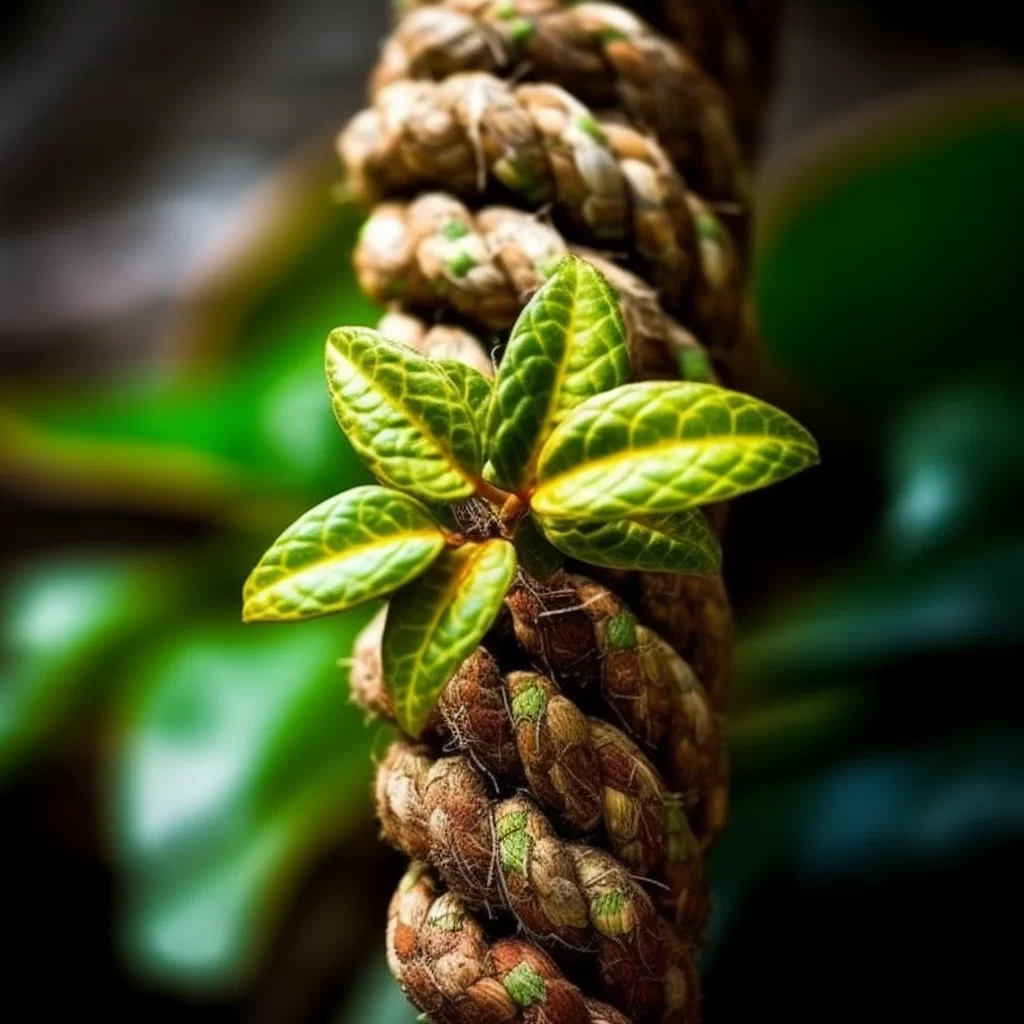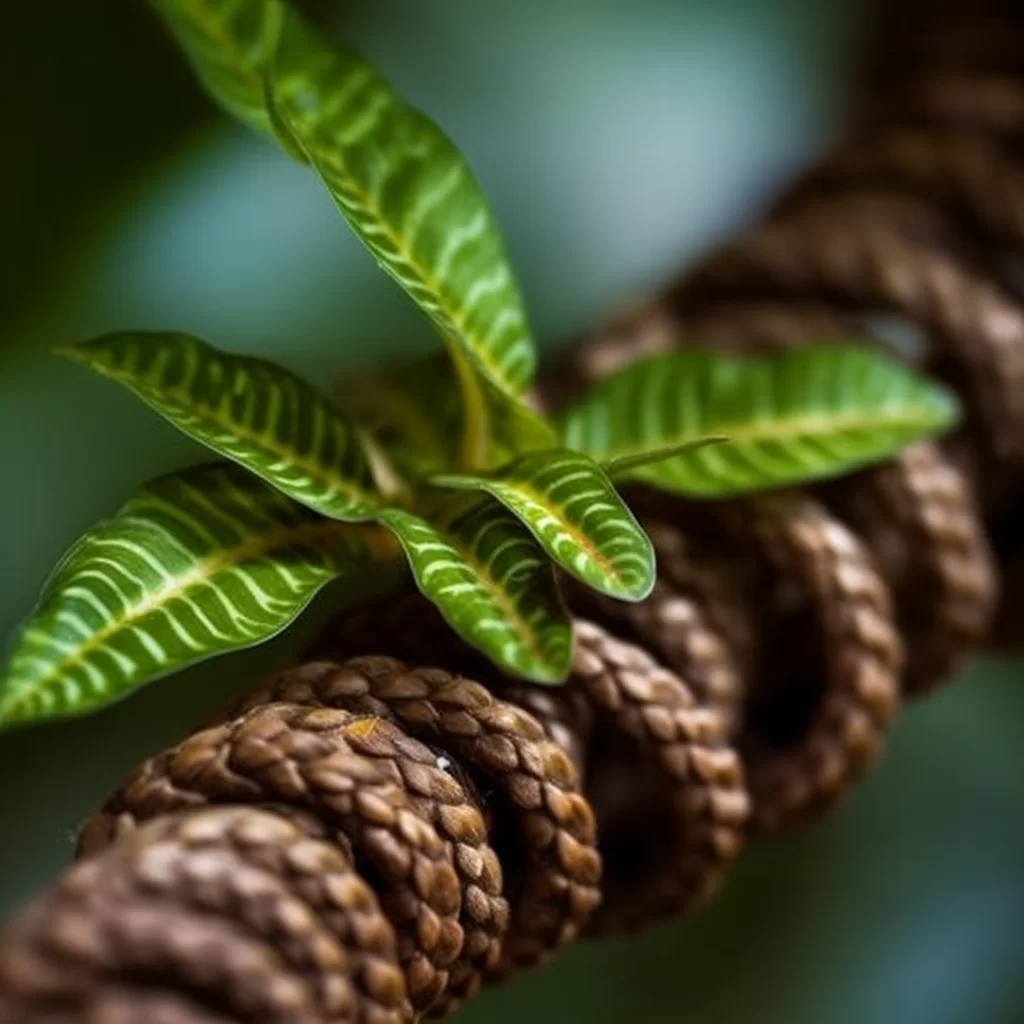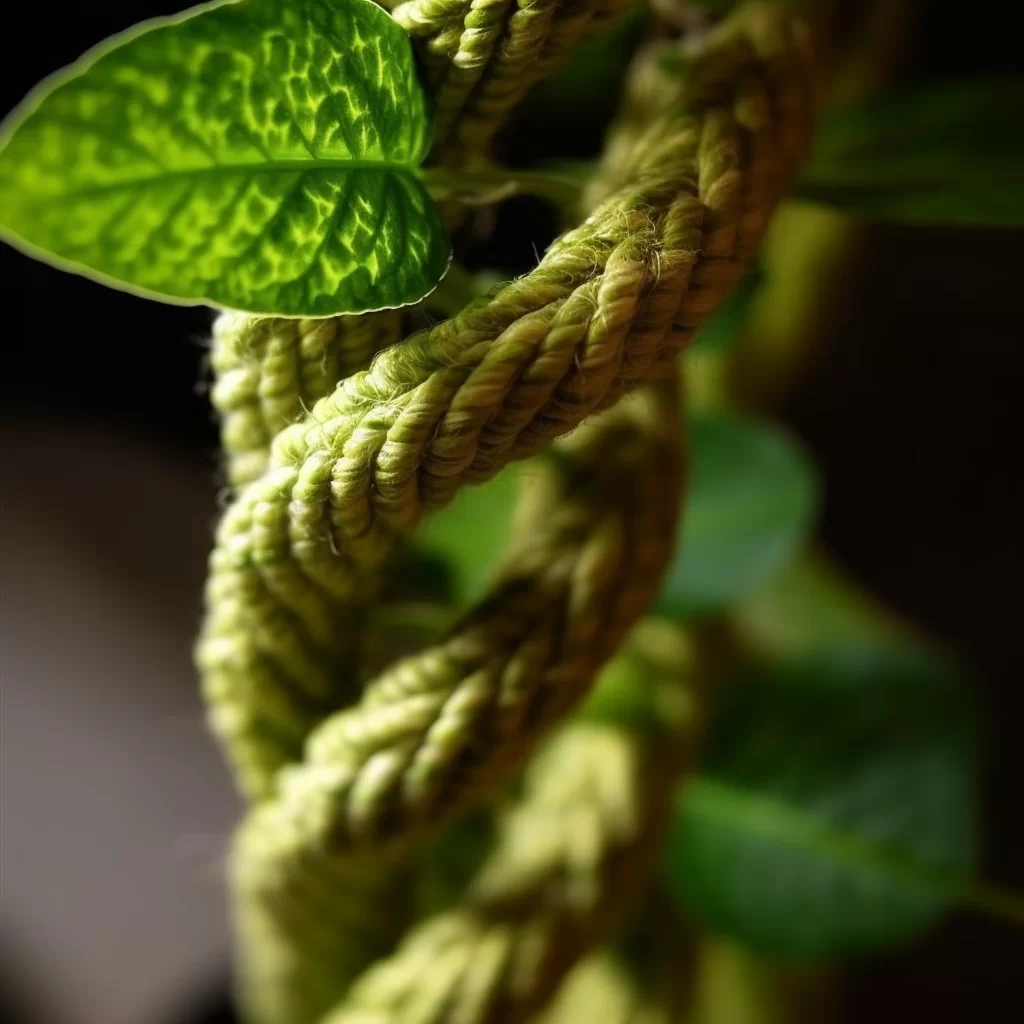Story of Day :
Contents
Indian Rope Plant: Complete Guide and Care Tips
Gardening is an amazing pastime that not only helps you unwind but also allows you to establish a stunning environment in your home.
There are several plants out there, but one of the more recent additions to this list is the Indian rope plant, or Hoya carnosa compacta.
This plant has gained popularity because of its extraordinary feature – long, trailing stems that resemble ropes.
You’ll love how this unique succulent creates a charming and exotic ambiance in any space.The Indian rope plant is perfect for those who want something diverse and captivating because it looks so different from other houseplants.
It’s easy to care for as it doesn’t require frequent watering and can thrive even in low-light areas indoors.
In addition to being incredibly attractive, this plant also has air-purifying properties that make it an ideal choice for homes or offices with poor air quality.
It’s no surprise why the Indian rope plant has become one of the most sought-after indoor plants today!
What is an Indian Rope Plant?
The Indian rope plant is a type of vine that grows in tropical regions and is part of the Apocynaceae family.
This evergreen perennial plant has its roots in countries such as India, Indonesia, Australia, and other parts of Southeast Asia.
The Indian rope plant’s striking appearance comes from its long stems that grow several feet long and are thickly wrapped together to form a rope-like structure.
It’s a fascinating sight to see the long stem hanging from a basket or trailing down from a shelf. In addition to its unique appearance, the Indian rope plant has some interesting characteristics such as being low maintenance and easy to care for.
In addition to its unique appearance, the Indian rope plant has some interesting characteristics such as being low maintenance and easy to care for.
It can tolerate low light conditions so it will thrive in any corner of your home or office space with minimal attention.
Furthermore, adding this ornamental houseplant not only brings aesthetic value but also provides natural air purification benefits due to its ability to absorb harmful toxins from the atmosphere.
All these features make it an excellent choice for those looking for an attractive yet straightforward indoor greenery option that can add life and color without requiring much effort!
The plant in question has a unique feature that sets it apart from other plants – its thick and waxy leaves.
What’s interesting is that these leaves grow in pairs along thin stems, which adds to the beauty of the plant.
The oval-shaped leaves are not only visually appealing but also have a glossy texture that makes them stand out.
These features make this plant an attractive addition to any garden or indoor space.If you’re looking for a plant with striking visual appeal, then look no further than this one.
Its distinct characteristic is its thick and waxy leaves which give it an exotic look.
What’s fascinating about this feature is how the leaves grow in pairs along thin stems, creating a beautiful arrangement on the stem itself.
Moreover, their oval shape and glossy texture add to their allure, making them even more eye-catching.
This makes owning this particular plant an excellent choice for anyone who wants to add some interesting greenery into their life without compromising on style or aesthetics.
The Indian rope plant is a beautiful and fragrant succulent that blooms during the spring and summer months.
You can expect to see small clusters of star-shaped flowers that are not only pleasing to the eye but also have a sweet scent.
Depending on the variety of the plant, you may witness flowers ranging from delicate shades of pink to vibrant hues of red. These dainty blooms typically appear atop long, trailing vines that make them an ideal addition to hanging baskets or draping over a shelf or table.
These dainty blooms typically appear atop long, trailing vines that make them an ideal addition to hanging baskets or draping over a shelf or table.
When in full bloom, they create an aura of freshness and tranquility in any space they occupy.
The Indian rope plant is just one example from nature’s vast collection that reminds us how beautiful this world truly is!
How to Care for an Indian Rope Plant
- Light: The Indian rope plants prefer bright but indirect sunlight.
Direct sunlight can scorch their leaves while too little light can slow down their growth or even halt it completely.
- Temperature: These plants thrive in warm temperatures between 60-80°F (15-27°C).
They cannot tolerate extreme cold hence should be kept away from drafty areas like windows during winter months
- Potting soil:This type of houseplant prefers well-draining soil rich in organic matter such as peat moss or coconut coir mixed with perlite
- Fertilizer:Fertilize once every three months using balanced liquid fertilizer diluted to half strength or use slow-release fertilizer granules applied once a year in spring
- Watering: Water when the top inch of soil is dry to touch.
Overwatering can cause root rot, so it’s recommended to plant in pots with drainage holes and avoid standing water.
- Pruning: Prune your Indian rope plant regularly to keep it from getting too leggy.
You can also pinch off new growth tips for a bushier look.
Propagation Techniques for Indian Rope Plant

If you’re looking to multiply your Hoya carnosa compacta, it’s best to do so in the spring or early summer.
This is when the plant is most active and can produce healthy cuttings for propagation.
There are two ways to propagate this plant: stem cuttings and layering.
Stem cuttings involve taking a portion of the stem with several leaves and nodes, then planting it in soil or water until roots develop.
Layering involves bending a stem towards the soil, making small incisions on its bark, applying rooting hormone, covering it with soil, and waiting for new roots to form.It’s essential to choose which method you prefer based on your preferences as well as those of your plant.
Some Hoyas might root more readily through layering while others may respond better to stem cutting propagation.
Both methods take time and patience but can lead to new plants that will thrive just like their parent plant given proper care such as regular watering and adequate light exposure among other things!
- Stem cuttings:Cut off a healthy stem from your mature plant, remove its lower leaves, and dip the cut-end into rooting hormone.
Plant the cutting in moist potting soil and cover with plastic wrap until roots begin forming.
After about four weeks, you can transplant it into a larger pot.
- Layering:Bend one of your plant’s long stems down towards the soil’s surface while still attached to the main stalk using toothpicks or twist ties then add some moistened soil on top of any bare spots touching the ground Make sure that you maintain constant moisture around this area throughout rooting period which usually takes several months- Once it has roots growing around those areas you’ve added topsoil onto them simply sever this new plant from its parent with clean shears at both ends
The Indian Rope Plant, also known as hoya carnosa compacta, is a popular houseplant appreciated for its unique rope-like appearance and low maintenance requirements.
However, this plant is not immune to pests and diseases that can harm its growth and overall health.
One of the most common issues is mealybugs infestation, which usually appears as white cottony spots on the leaves or stems.
Mealybugs feed on the sap of the plant, causing it to weaken and eventually die if left untreated.
Another common pest that affects Indian Rope Plant is spider mites.
These tiny arachnids thrive in dry environments and can cause yellowing or bronzing of the leaves if they’re not controlled with insecticides or by increasing humidity levels. In addition to pests, Indian Rope Plant can also suffer from a few diseases such as root rot caused by overwatering or fungal infections that thrive in damp conditions.
In addition to pests, Indian Rope Plant can also suffer from a few diseases such as root rot caused by overwatering or fungal infections that thrive in damp conditions.
Symptoms of root rot include wilting leaves that turn yellowish-brown before falling off while fungal infections show up as black spots on leaves or stems accompanied by wilting parts if left uncontrolled for long periods.
Proper care including regular watering schedules that allow for adequate drainage can prevent these issues from occurring in your indoor garden!
The Hoya carnosa compacta is a popular houseplant that generally doesn’t attract many pests.
However, if the plant is placed in an environment with excess dust, it may become infested with spider mites.
These tiny insects can be eliminated by gently spraying water on the leaves or wiping them down with insecticidal soap.
It’s important to take proper care of your plants to avoid pest infestations and ensure they thrive in a healthy environment.Spider mites are known for being particularly difficult to deal with because they reproduce quickly and can cause significant damage to plants if left untreated.
Thankfully, the Hoya carnosa compacta is relatively resistant to pests and won’t typically attract other types of insects or diseases when kept in ideal conditions.
If you do notice signs of spider mite infestation, don’t panic – simply remove them by gently washing your plant or using insecticidal soap as needed.
By staying vigilant about potential pest problems and taking proper precautions, you can enjoy a beautiful and healthy Hoya carnosa compacta for years to come!
It is important to understand the impact of watering on your Indian rope plant’s health and pest infestations.
Too much watering can contribute to root rot and attract fungus gnats, which will harm your plant.
On the other hand, inadequate watering can cause dry and brittle leaves that may not only affect the appearance of the plant but also its overall growth.
Therefore, it is crucial to have proper watering techniques in place for maintaining a healthy Indian rope plant while keeping pests at bay.To keep your Indian rope plant thriving, it is essential to know how much water it requires as overwatering or underwatering could lead to severe consequences.
Overwatering contributes significantly to root rot disease that destroys roots and makes them unable to function correctly hence hindering growth processes of plants.
In contrast, under-watered plants tend to develop dryness causing withered leaves that make them look dull and unappealing.
Hence maintaining an appropriate balance while providing enough water for your Indian Rope Plant will keep its foliage healthy and vibrant while also minimizing risks of attracting pests like fungus gnats that thrive on moist soil conditions where larvae hatch leading ultimately destructive outcomes if not controlled early enough
In Conclusion
The Indian rope plant is a low-maintenance houseplant that’s easy to care for and propagate.
Their unique appearance make them an attractive focal point in any room.
Keep these tips in mind when caring for your Hoya carnosa compacta and you’ll have a beautiful addition to your indoor garden!